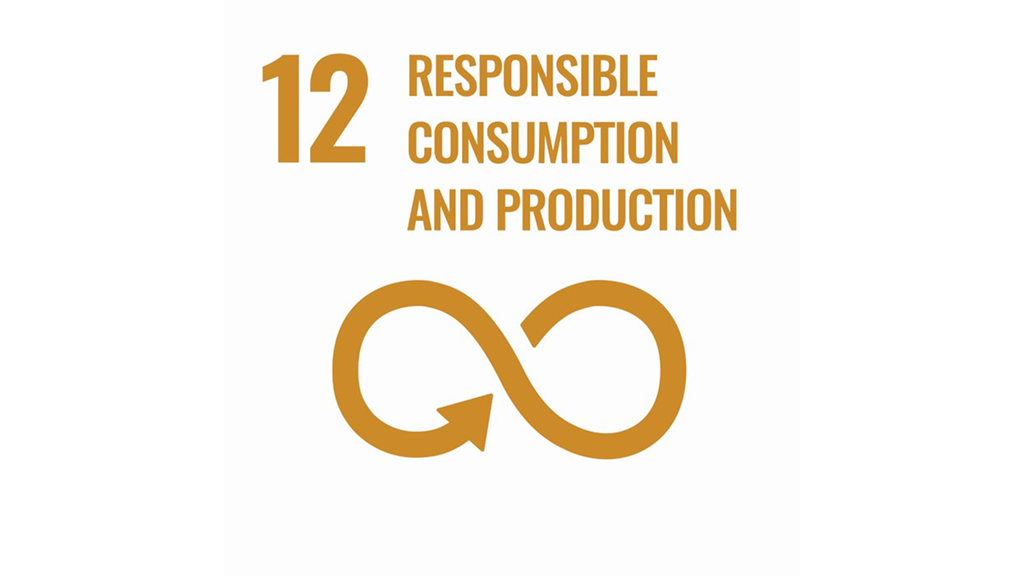Let’s Establish Responsible Consumption and Production
“Ensure sustainable consumption and production patterns”
Global consumption is a driving economic force in today's society. However, for it to be responsible and sustainable it demands adequate practices both when it comes to consumption and the associated production of goods. This insight lays out the importance of the UN Sustainable Development Goal 12 (SDG 12) and how we as SpinChem contribute.
The Goal and Its Importance
According to the United Nations, sustainable consumption and production will maximize socio-economic benefits. Even though all SDGs are essential, one that pertains to both responsible production and consumption is of particular significance because any gains made in optimizing resource use at the production level may be undermined by knock-on effects of increased consumption.

There are many aspects of consumption that with simple changes can deliver a substantial impact on mankind and the world as a whole. However, many of them are societal or localized and must thus be targeted in a decentralized fashion. Nonetheless, as a general rule, the reduction of lost materials and goods as well as the avoidance of waste generation vitally contribute to environmental sustainability by lowering specific resource needs at the stage of production and also during remediation, i.e., workup efforts after consumption.
How can we help as a business?
- By introducing innovative solutions to identified bottlenecks that stand in the way of more sustainable production.
- By using and promoting solutions that enable sustainable consumption and production patterns.
Efforts by SpinChem
SpinChem enables sustainable consumption patterns via its rotating bed reactor (RBR) technology as it boosts reuse and recycling of (bio)catalysts in the chemical production of products. This leads to a reduction in waste generation and stimulates efficient use of resources (SDG 12.2 and SDG 12.5).
The use of the RBR allows, e.g., to avoid hazardous materials, or to reuse immobilized enzymes (biocatalysts) for multiple chemical production steps. The RBR technology can also be deployed to recycle plastics. As future bioeconomies will be characterized by the sustainable conversion of biomass and recycling of wastes, our product series is well positioned to benefit this development.
Regulation and collaboration plays a key role when working on SDG 12. SpinChem has actively established collaborations to ensure that the RBR contributes to sustainable consumption and production pattern:
- The C-ROS Project for Circular Economy
One way to achieve SDG 12 is by implementing a circular economy, which is the antithesis of current consumption patterns and crucial for its success. It is obvious that SDG 12, responsible for consumption and production, is at the heart of the circular economy.
Understanding this, Vidyasirimedhi Institute of Science and Technology (VISTEC), an institution, launched the C-ROS project as an alternative waste management approach using the SpinChem RBR for biocatalytic up- and recycling.
This project is changing the way villages handle their waste. Organic waste is converted into biofuels, fertilizers, and other value-added biochemical products directly on-site of communities, which means that the villages recover the value for their own recycling efforts.
- The INTERfaces Project
Furthermore, SpinChem is part of the European project INTERfaces which aims to establish multi-step biocatalytic reactions using heterogenized enzymes. These ‘heterogeneous biocatalytic reaction cascades’ are poised to minimize waste generation by re-use of catalysts, simplification and reduction of processing steps, and avoidance of hazardous materials.
INTERfaces focuses on the engineering of the cascade reactions enabled by solid phase biocatalysts. This includes the design of reactors, use of computational modeling tools, application of the right operational modes and reaction medium needed for desired space-time-yields and product titers. Commercially relevant processes will be up-scaled together with industry for technical implementation. INTERfaces combines material science and protein engineering to design tailored enzymes and (bio-based) materials that complement our future industrial needs for heterogeneous biocatalysis.
A successful contribution to SDG 12 improves resource efficiency and the overall life cycle of economic activities. With the RBR technology, SpinChem aims to contribute, raise awareness, and normalize sustainable practices.
What is holding you back from benefitting from such a sustainable practise?
Start your rotating bed reactor journey with us today. - Get in touch!

